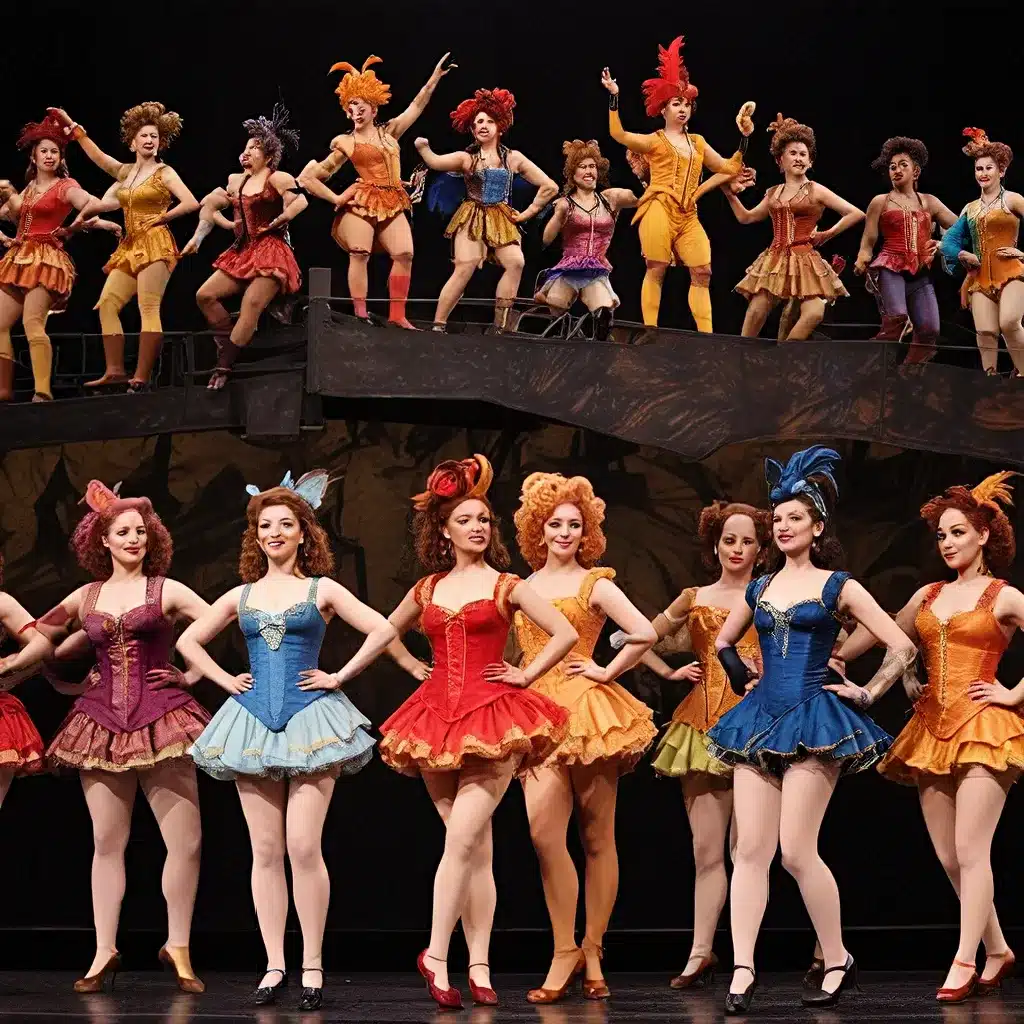
From Greek Tragedy to Broadway Grandeur
Ah, the fascinating world of theatrical costuming – where the art of fashion and the magic of performance collide in a dazzling display of sartorial splendor. As a passionate devotee of all things musical theater, I’ve long been captivated by the evolution of costume design and its profound impact on the stage.
Let’s start our journey way back in the ancient Greek festivals honoring the god Dionysus. These early theatrical performances were heavily ritualized, with masks playing a crucial role in establishing the comedic or dramatic tone of each character. Fast forward to the Middle Ages, and we see a shift towards more realistic, lifelike costumes as biblical stories took center stage across Europe. Audiences craved a faithful representation of the period, and the garments began to reflect that desire.
But it wasn’t until the 15th and 16th centuries in Elizabethan England that costume truly became a centerpiece of theatrical production. As the Promotional Props and Costumes team notes, “the garments were becoming far more expensive and were created using only the finest of fabrics.” These opulent outfits were often based on the fashions of the time, with the occasional nod to specific characters or historical eras.
A Lavish and Outlandish Era
The 17th century saw an even greater emphasis on lavish, extravagant costumes, as performers sought to outdo one another with their sartorial showmanship. According to the Promotional Props and Costumes experts, “By 1750 stage costumes were becoming a little more sensible again, with performers wearing costumes related to the characters.”
This gradual shift towards authenticity continued into the 19th century, with productions like Shakespeare’s plays leading the charge. Costume designers began to focus on creating outfits that truly reflected the historical context of the story, rather than just prioritizing extravagance.
The Dawn of the Modern Era
The 20th century ushered in a new era of costume design, with the rise of groundbreaking talents like Florence Klotz. As the Library of Congress blog post highlights, Klotz’s career was anything but planned – it evolved “mostly through luck.” Yet, her impact on the world of musical theater was undeniable, with her costumes for shows like “Follies,” “A Little Night Music,” and “Pacific Overtures” earning her numerous Tony Awards.
Klotz’s genius lay in her ability to balance the conscious and subconscious, the surface and the hidden. Her designs were not just beautiful, but they also told a deeper story about the characters and the worlds they inhabited. As the blog post notes, “She had to be a historian, researching her designs to be appropriate to time, place and situation. She had to be expert in textiles, knowing how each fabric folds, flows, cuts, takes the light, lays, ages and lasts.”
The Costumes of “Six the Musical”
But the evolution of costuming in musical theater doesn’t stop there. In recent years, we’ve seen a resurgence of creativity and innovation, with shows like “Six the Musical” leading the charge. As costume designer Rachael Dickzen notes, the costumes for “Six” were inspired by the “iconic looks” of the six wives of Henry VIII, but with a modern, pop-infused twist.
The attention to detail is astounding, with each queen’s outfit reflecting her unique personality and position within the narrative. From Catherine of Aragon’s regal red gown to Anne Boleyn’s edgy, punk-inspired ensemble, the costumes are as much a part of the storytelling as the music and lyrics.
The Future of Theatrical Costuming
As we look to the future of theatrical costuming, the possibilities are endless. With advancements in technology, materials, and design techniques, the sky’s the limit for what costume designers can create. Imagine the breathtaking costumes that will grace the stages of the Musical Theater Center in the years to come – a dazzling fusion of historical elegance, cutting-edge style, and pure theatrical magic.
I can just picture it now: the grand opening of a new production, the anticipation building in the air as the audience waits with bated breath. Then, the lights dim, the curtain rises, and a parade of stunning, meticulously crafted costumes takes center stage, transporting us to another time and place. It’s a moment of pure wonder, a testament to the enduring power of the theatrical art form and the ever-evolving craft of costume design.
So, my fellow theater enthusiasts, let us raise a glass (or a feathered, sequined, bejeweled glove) to the past, present, and future of costuming in musical theater. For in the words of the inimitable Elizabeth Taylor, “If only [costume designers] could have controlled my boobs when I ran.” Here’s to the visionaries who continue to push the boundaries of what’s possible on the stage.

